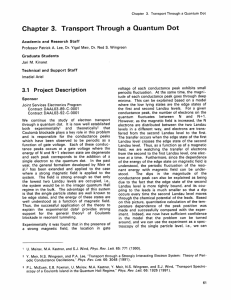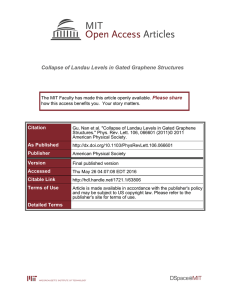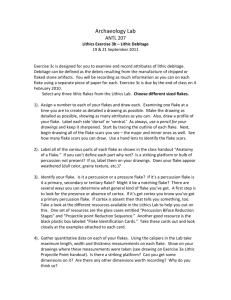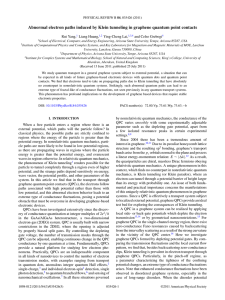Graphene2013_Herbschleb_David_edh26
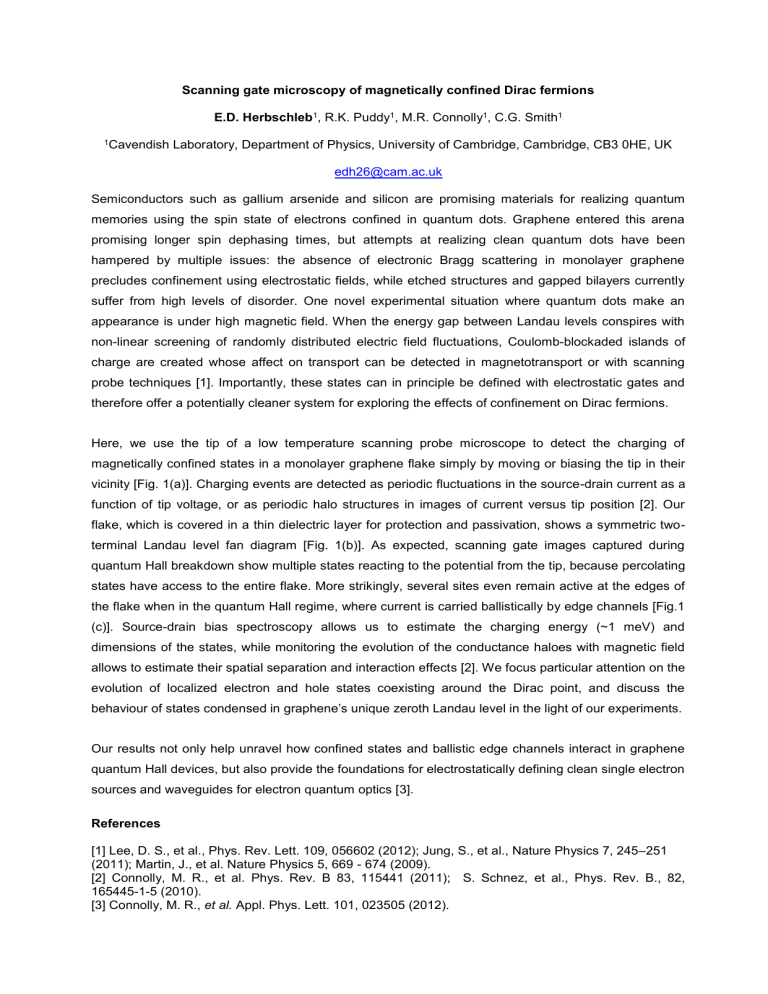
Scanning gate microscopy of magnetically confined Dirac fermions
E.D. Herbschleb 1 , R.K. Puddy 1 , M.R. Connolly 1 , C.G. Smith 1
1 Cavendish Laboratory, Department of Physics, University of Cambridge, Cambridge, CB3 0HE, UK edh26@cam.ac.uk
Semiconductors such as gallium arsenide and silicon are promising materials for realizing quantum memories using the spin state of electrons confined in quantum dots. Graphene entered this arena promising longer spin dephasing times, but attempts at realizing clean quantum dots have been hampered by multiple issues: the absence of electronic Bragg scattering in monolayer graphene precludes confinement using electrostatic fields, while etched structures and gapped bilayers currently suffer from high levels of disorder. One novel experimental situation where quantum dots make an appearance is under high magnetic field. When the energy gap between Landau levels conspires with non-linear screening of randomly distributed electric field fluctuations, Coulomb-blockaded islands of charge are created whose affect on transport can be detected in magnetotransport or with scanning probe techniques [1]. Importantly, these states can in principle be defined with electrostatic gates and therefore offer a potentially cleaner system for exploring the effects of confinement on Dirac fermions.
Here, we use the tip of a low temperature scanning probe microscope to detect the charging of magnetically confined states in a monolayer graphene flake simply by moving or biasing the tip in their vicinity [Fig. 1(a)]. Charging events are detected as periodic fluctuations in the source-drain current as a function of tip voltage, or as periodic halo structures in images of current versus tip position [2]. Our flake, which is covered in a thin dielectric layer for protection and passivation, shows a symmetric twoterminal Landau level fan diagram [Fig. 1(b)]. As expected, scanning gate images captured during quantum Hall breakdown show multiple states reacting to the potential from the tip, because percolating states have access to the entire flake. More strikingly, several sites even remain active at the edges of the flake when in the quantum Hall regime, where current is carried ballistically by edge channels [Fig.1
(c)]. Source-drain bias spectroscopy allows us to estimate the charging energy (~1 meV) and dimensions of the states, while monitoring the evolution of the conductance haloes with magnetic field allows to estimate their spatial separation and interaction effects [2]. We focus particular attention on the evolution of localized electron and hole states coexisting around the Dirac point, and discuss the behaviour of states condensed in graphene’s unique zeroth Landau level in the light of our experiments.
Our results not only help unravel how confined states and ballistic edge channels interact in graphene quantum Hall devices, but also provide the foundations for electrostatically defining clean single electron sources and waveguides for electron quantum optics [3].
References
[1] Lee, D. S., et al., Phys. Rev. Lett. 109, 056602 (2012); Jung, S., et al., Nature Physics 7, 245 –251
(2011); Martin, J., et al. Nature Physics 5, 669 - 674 (2009).
[2] Connolly, M. R., et al. Phys. Rev. B 83, 115441 (2011); S. Schnez, et al., Phys. Rev. B., 82,
165445-1-5 (2010).
[3] Connolly, M. R., et al. Appl. Phys. Lett. 101, 023505 (2012).
Figure
Figure 1. (a) Schematic depiction of the setup used to perform scanning gate microscopy of a graphene device exfoliated onto an Si/SiO
2
substrate and coated with a thin dielectric layer (PMMA). (b)
Conductance of the device showing a Landau level fan diagram. Red lines indicate the linear evolution of the Landau levels in magnetic field and carrier density, here controlled using the voltage applied to the doped Si backgate. (c) Scanning gate micrograph captured under the conditions marked by [c] in the fan diagram of (b). The device outline, including the edge of the flake and the contacts, are indicated by overlaid lines. High and low conductance correspond with the yellow (light) and red (dark) regions respectively. Two pronounced sets of haloes centred approximately at the edge of the flake have been marked by black circles for clarity. Images and conductance data captured at T=4.2 K.


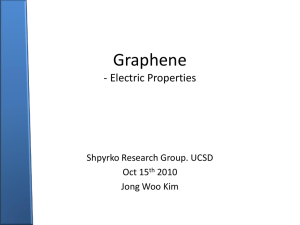
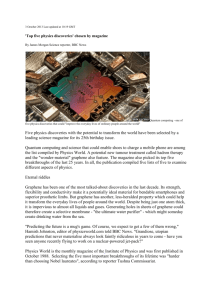

![[1]. In a second set of experiments we made use of an](http://s3.studylib.net/store/data/006848904_1-d28947f67e826ba748445eb0aaff5818-300x300.png)
